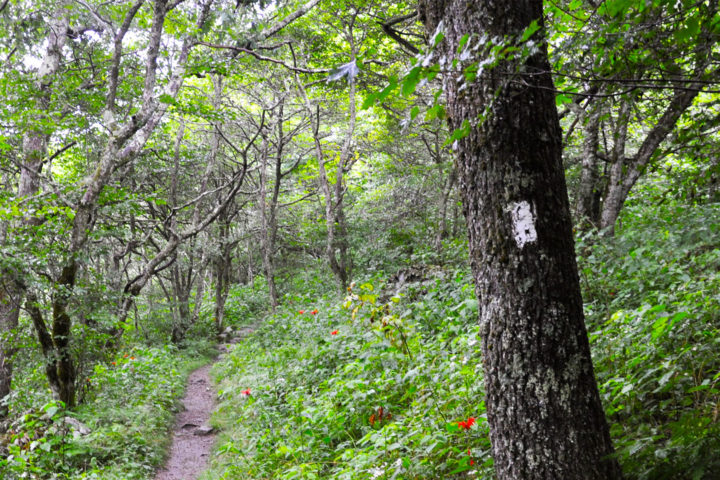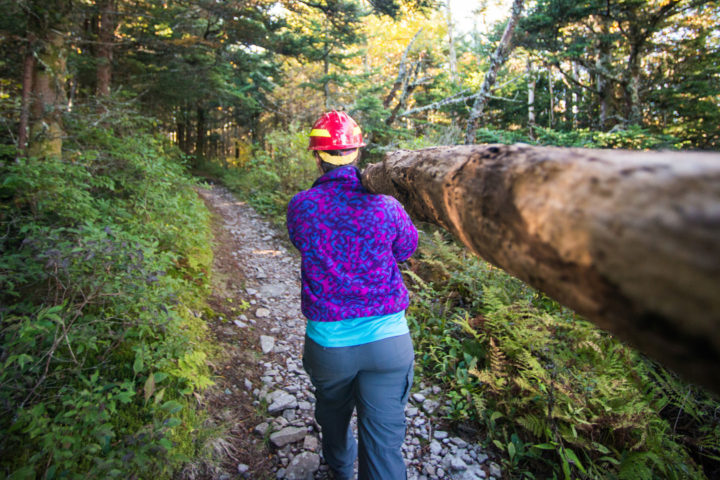By Maggie Slepian
A Year Like No Other
February 5, 2021
With COVID-19 continuing to grip the country, the Appalachian Trail Conservancy (ATC) continues to recommend that aspiring Appalachian Trail (A.T.) thru-hikers postpone or cancel their journeys. In addition to the logistical difficulties caused by state-to-state travel restrictions along the Trail, the risk of unintentionally (and unknowingly) contracting or spreading COVID-19 remains real. Despite this recommendation, it is evident that hikers will be embarking on journeys on the Trail, and planning and preparation will be key to their safe and successful journeys on the A.T.
Learn more about the ATC’s 2021 hiking guidance and planning and preparation recommendations here.
Hikers who have decided to thru-hike in 2021 should understand the experience of thru-hiking the Trail will come with a new set of challenges this year:
- More crowded: ATCamp registrations and data from other sources indicate the A.T. will likely be more crowded this year, as the already large group of new thru-hikers will share the Trail with hikers resuming the journeys they postponed in 2020.
- Social Distancing: Social distancing will be especially challenging, as campsites and shelters (if open) could quickly become full.
- Trailside Communities: 2021 hikers need to take extra precautions in town and understand that medical resources in Trailside communities may be overwhelmed or insufficient.
- Quarantine: Hikers should be prepared — financially and logistically — to quarantine for two weeks if they develop symptoms of COVID-19 or test positive for the virus.
Here are a few ways that those who decide to attempt a 2021 A.T. thru-hike should factor in the continued risk of COVID-19 while planning their A.T. journeys:
Register your hike at ATCamp.org to help avoid large crowds and damage to the Trail.
The ATC’s voluntary registration system, ATCamp.org, provides visitors with an overview of days that are at capacity so thru-hikers can choose uncrowded start days. ATCamp already has more than double the registrations that are normally seen at this time of year. We emphasize the importance of registering your hike during the pandemic not only so you can receive important updates on Trail conditions, but also so you can avoid crowds during the pandemic.
Next week, the ATC will lift the limit set on ATCamp that prevented new registrations on days that were already at maximum capacity (we will update this post when the change goes live). This cap was previously set at 38 registrants, which was established to help prevent crowding and resource damage and help assure a good A.T. experience. In the wake of this change, the number of registrants may continue to grow, giving a clearer picture of the amount of A.T. crowding that will occur this year, particularly in North Georgia during the early spring.
Plan to keep your distance on (and off) the Trail.
An increase in 2021 hikers will mean more crowding at campsites, more hikers in towns, and less space to spread out along the Trail. Consider the following practices:
- Start your hike in mid-April or later, or begin at an alternate, less crowded starting location.
- Vary your miles to avoid the most crowded sites.
- Plan alternate resupply strategies that will help you minimize time spent in potentially crowded spaces.
- Avoid clusters at campsites and in towns.
Always carry a mask and make sure it is easily accessible while hiking.
Whenever social distancing is not possible — such as when you are passing another person on a narrow section of the Trail — wear a CDC-approved mask. Carry at least one extra mask in case one becomes lost, damaged, or soiled. Wash your mask frequently — if washing in the backcountry, be sure to use biodegradable soap and follow Leave No Trace Principles (see section “Dispose of Waste Properly”).
Avoid A.T. shelters — instead, carry your own.
With many hikers starting from the southern end of the Trail at the same time, camping areas will be crowded. Consider your tent or other personal shelter as your on-trail home. Regardless of weather or other conditions, staying in your own shelter will be the safest option to help remain spaced apart from other hikers and away from potentially contaminated surfaces.
Stay within your limits.
Being prepared and knowing your limits doesn’t just protect you from potentially significant injuries — it avoids straining emergency resources and helps protect the first responders who would come to assist you. Medical clinics and emergency services in small trail towns will be more limited than ever. Emergency rescue, in-town treatment, and medical assistance might be slower to respond or difficult to get ahold of. Further, first responders will be at a greater risk of COVID-19 infection if they need to rescue hikers.
Plan your town stays, rides, and resupplies according to safe social distancing.
A large “bubble” of northbound hikers usually moves at roughly the same pace for at least the first few hundred miles. This means bottlenecks in towns, shuttles, and motels. In keeping with the idea of social distancing, you will need to plan ahead or try to vary your pace to avoid reaching places with limited resources at the same time. Staying within your immediate circle might mean spending more for private rooms, waiting longer for shuttles (or avoiding them altogether), and avoiding peak hours of resupplies and laundry days in town. Whenever you are in town, in groups of hikers, or on crowded sections of trails, maintain distance from others who are not in your immediate bubble and always have your mask ready to pull over your nose and mouth.
Be prepared to quarantine if you become infected or show symptoms.
If you become infected with COVID-19, it will be necessary to quarantine during your hike. Hikers should be prepared financially to self-isolate in a hotel room for up to two weeks. If someone you are hiking with becomes infected, get tested and quarantine while waiting for results to come back in. If you start to develop symptoms regardless of a positive test, you should be prepared to quarantine as well.
If, despite CDC warnings not to travel, you decide to attempt a long-distance A.T. hike this year, extra preparation for towns and social distancing, financial security and logistical planning for potential quarantine, and precautions to avoid spreading COVID-19 should be in place well before starting your hike.
Planning and preparation have always been essential to safe and successful journeys on the A.T. In the new reality ushered in by the COVID-19 pandemic, planning and preparation take on significant new meaning and can help protect the health and safety of not only yourself but also other hikers, A.T. volunteers and Trailside communities.
The response to COVID-19 is constantly evolving throughout the world, and the ATC is frequently updating its guidance and listings of Trail-related closures and travel restrictions. To make sure you have the most up-to-date information, please visit appalachiantrail.org/covid19.
Discover More

Stay Safe on the A.T.
COVID-19 Latest Updates
Be aware of safety guidelines, local restrictions and closures, and the latest information on how COVID-19 could affect your time on the A.T.

Plan and Prepare
Hiker Resource Library
A collection of resources for hikers to stay safe, healthy, and responsible on the Appalachian Trail.

Stay Informed
Latest News
Read the latest news and updates about the Appalachian Trail and our work to protect it.


